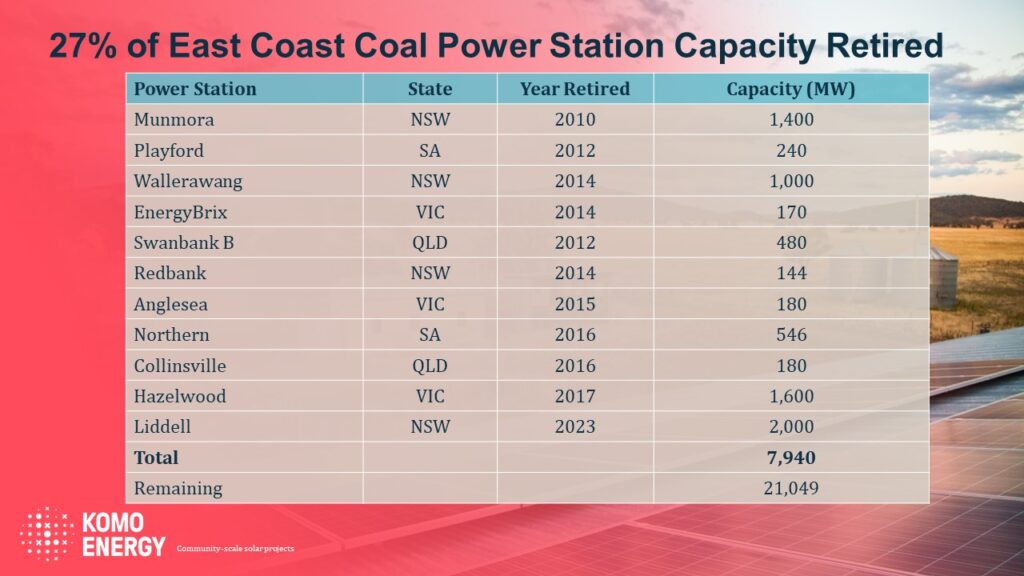

The Retirement of Liddell Power Station: A Milestone

The Rise of Wind and Solar
Dispelling Myths: Solar and Wind as Viable Alternatives
A common argument against renewable energy is that wind and solar is nice, but cannot truly replace dispatchable power capacity like coal power stations. However, the 7.9 GW retirement of coal power demonstrates that solar and wind are not just environmentally conscious, but practical and effective alternatives.
We understand that these closures create disruption in the local economy, but we hope that workers impacted by these closures will find jobs in the transition to a low carbon economy.
The next phase of the grid transformation requires thoughtful planning and action. Integrating higher levels of solar and wind will necessitate increased storage. Although, recent analysis indicates that wind and solar alone can lead us a significant way towards a renewable grid, a topic that deserves further exploration in future discussions.
Although much work lies ahead, this is progress worth celebrating. As we continue to strive for a more sustainable future, these advancements reiterate that progress is not only possible but already well underway.